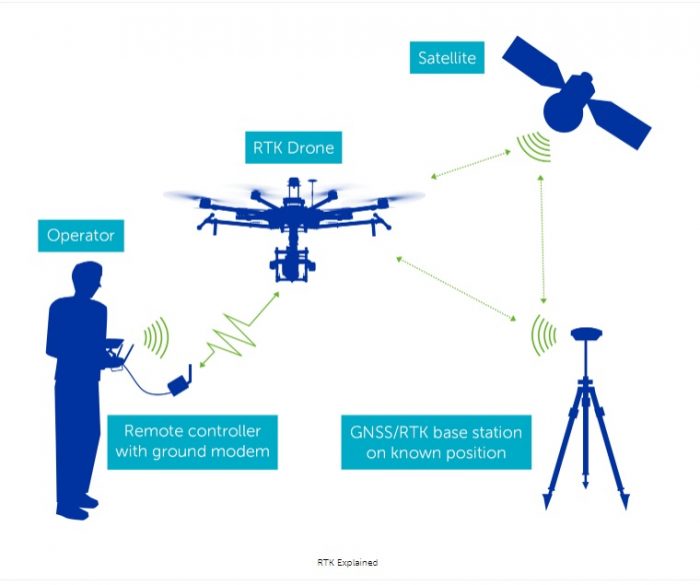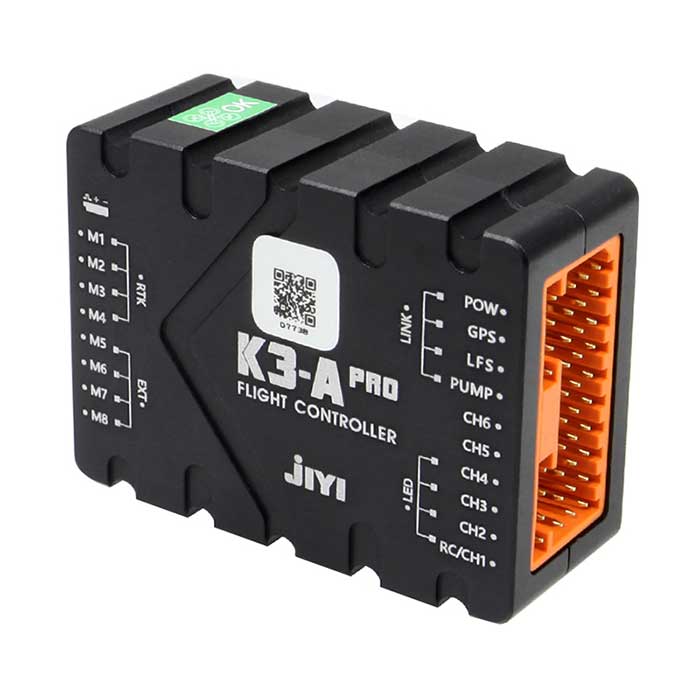The Potential of UAVs: SparkNavi Drone Flight Controller and GNSS/INS Made in Taiwan
Discovering the Duty of Drone Trip Controllers in Enhancing Flight Security and Navigating Efficiency
The improvement of drone technology has significantly increased the importance of flight controllers, which offer as the mind of these airborne cars. By incorporating real-time data from a variety of sensors, flight controllers boost trip stability and navigating effectiveness, ensuring that drones can run efficiently also in intricate environments.

Recognizing Trip Controllers
Trip controllers are important parts in the functioning of drones, serving as the minds that take care of and maintain trip procedures. These innovative devices procedure data from numerous sensing units, consisting of accelerometers, gyroscopes, and GPS, to make certain that the drone maintains its desired trip path. The trip controller translates this data and implements commands based upon pre-defined algorithms, making it possible for the drone to respond to ecological adjustments, such as wind or challenges.
The primary feature of a trip controller is to preserve security during trip. It attains this by making real-time modifications to the drone's electric motors and control surface areas, guaranteeing balance and control. Furthermore, modern flight controllers integrate sophisticated features such as waypoint navigation, permitting automated flight courses and enhanced functional efficiency.
Recognizing the design of trip controllers is essential for both specialists and enthusiasts. They usually contain a microcontroller, firmware, and different user interfaces for sensor input and interaction. As technology advances, flight controllers have actually come to be more small and capable, integrating fabricated intelligence to improve decision-making processes and adapt to complex flight scenarios. This advancement symbolizes a pivotal growth in the drone market, leading the means for much more advanced applications and more secure procedures.
Secret Parts of Flight Stability
Accomplishing ideal flight stability in drones counts on a number of key elements that work in show to ensure smooth and regulated procedures. Central to this security is the flight controller itself, which refines data from numerous sensing units to preserve the preferred trip attitude. This consists of accelerometers and gyroscopes that gauge activity and orientation, enabling for real-time adjustments to the drone's position.
An additional vital component is the digital rate controllers (ESCs), which manage the power provided to the motors. By finely tuning motor rates in reaction to trip controller commands, ESCs help preserve balance and counteract disturbances brought on by wind or sudden motions.
In addition, the design of the drone's frame plays a crucial function in trip stability. A well-structured framework minimizes resonances and boosts the overall wind resistant profile, adding to smoother flight qualities. The assimilation of sophisticated algorithms within the trip controller aids in anticipating modifications, making certain a responsive and adaptable trip experience.
With each other, these components create a natural system that improves a drone's security, enabling for exact maneuvering and enhanced performance in different trip problems.
Navigation Effectiveness Techniques
Effectiveness in navigation is essential for enhancing drone procedures, especially in complex atmospheres. Reliable navigating methods enhance the ability of drones to traverse challenging terrains and prevent obstacles, thus enhancing functional performance and safety.
One prominent technique is the application of innovative general practitioners and inertial measurement devices (IMUs) that give accurate place tracking and positioning information. These technologies permit drones to determine ideal flight courses in real-time, thinking about numerous elements such as wind problems and prospective challenges.
One more method entails the usage of algorithms for course planning and optimization. Formulas such as A * and Dijkstra's formula can be deployed to figure out one of the most reliable path while decreasing power intake and flight time. In addition, incorporating look at this web-site artificial intelligence models can allow drones to adaptively learn from their atmospheres, boosting navigating capabilities through experience.

Effect on Autonomous Drones
The integration of innovative navigating methods has actually exceptionally changed the abilities of independent drones, enabling them to operate with greater autonomy and accuracy. SparkNavi drone flight controller and GNSS/INS made in taiwan. These improvements are mostly credited to innovative flight controllers that utilize real-time information handling and sensor blend, allowing drones to browse complicated settings seamlessly
The influence on autonomous drones prolongs beyond simple navigating; it encompasses boosted obstacle avoidance, enhanced stability throughout vibrant problems, and enhanced mission reliability. By leveraging formulas that integrate artificial intelligence and synthetic knowledge, drones can adjust to altering circumstances, making educated choices that maximize their trip paths while decreasing dangers.
In addition, the implementation of robust trip controllers has actually assisted in the execution of intricate jobs, such as aerial inspections, delivery services, and farming tracking, with marginal human treatment. This capacity not just simplifies operations but likewise decreases human mistake, therefore enhancing general safety.
As an outcome, the functional extent of self-governing drones has expanded considerably, making them indispensable tools in different markets. Their capability to carry out successfully in diverse situations underscores the important role that advanced trip controllers play in forming the future of unmanned aerial systems.
Future Fads in Flight Control
Frequently, improvements in flight control innovation are poised to redefine the landscape of drone operations in the coming years. Arising fads show a considerable shift towards improved expert system (AI) combination, making it possible for flight controllers to refine real-time information extra effectively. This advancement will certainly help with enhanced decision-making capabilities, permitting drones to adapt to vibrant ecological conditions autonomously.
Moreover, the execution of device learning algorithms is anticipated to enhance anticipating maintenance, consequently minimizing find more info downtime and prolonging the lifecycle of drone parts. This proactive method to maintenance will be critical as drone applications expand throughout various markets, from farming to logistics.

.jpg)
Last but not least, advancements in safe interaction procedures will certainly resolve security and regulatory issues, making sure that drones can operate perfectly in stuffed airspaces (SparkNavi drone flight controller and GNSS/INS made in taiwan). Collectively, these trends aim towards a future where flight control systems are not only smarter and much more efficient but likewise capable of operating safely in an increasingly integrated airspace
Final Thought
Finally, drone trip controllers are important to enhancing trip stability and navigating efficiency with the innovative processing of sensing unit information. By maintaining optimum trip perspectives and using sophisticated formulas for path optimization and barrier avoidance, these controllers substantially contribute to the autonomy and operational security of drones. As modern technology continues to evolve, better innovations in flight control systems are anticipated, assuring enhanced performance and broadened capabilities in the world of unmanned airborne automobiles.
By incorporating real-time information from a variety of sensors, flight controllers improve flight security and navigation efficiency, ensuring that drones can run smoothly also in intricate atmospheres.Flight controllers are important parts in the performance of drones, serving read review as the minds that support and take care of flight procedures. Additionally, modern trip controllers include advanced functions such as waypoint navigating, enabling for automated flight paths and improved operational effectiveness.
Central to this stability is the flight controller itself, which refines data from different sensors to keep the wanted flight attitude.In conclusion, drone trip controllers are indispensable to improving flight stability and navigation performance with the advanced handling of sensing unit data.